All About Indian Head Gold Coins
Background Of Indian Head Gold Coins
.jpg)
Augustus Saint-Gaudens, who President Theodore Roosevelt commissioned to revamp the artistic quality of American coins. The later Indian Head design, created by Bela Lyon Pratt, featured a Native American man wearing a feathered headdress on the obverse side with a majestic eagle on the reverse.
The Indian Head Gold Coins were introduced as part of the pre-1933 gold coin series, also known as the Saint-Gaudens coinage.
Overview Of Coin Series
The Indian Head gold coin series is a fascinating collection of coins that offers a glimpse into the rich history of American coinage. This series includes various coins, each with its unique design and significance.
At the president's direction, the Mint hired Saint-Gaudens to redesign the cent and four gold pieces: the double eagle ($20), eagle ($10), half eagle ($5), and quarter eagle ($2.50). Saint-Gaudens completed the first two designs before his death. These coins debuted after some modifications by the Mint, but later had to be recalled after public outcry over the omission of the motto "In God We Trust".
The mint had originally intended to use the same design on the two remaining gold coins. However, the smaller size of the half eagles and quarter eagles made placing the required inscriptions difficult. Thus, the decision was made to use a new design based on what Saint-Gaudens did for the Indian Head eagle.
One noteworthy coin is the last circulating $10 "Indian Head" gold coin, which features a raised "third" side of raised stars around the edge, adding to its unique appeal. A total of 13 stars appear on the coin, each representing a state in the Union at the time the coin was issued.
Throughout the Indian Head gold coin series, the design updates and variations showcased the evolution of American coinage. Changes such as the addition of the motto "In God We Trust," are seen on some coins. Alterations to the edges and revised strikes also contribute to the diverse range of designs within the series.
The Indian Head gold coins allow collectors and enthusiasts to own a piece of history. With their distinct designs and rich symbolism, these coins stand out among other American coinage. Whether you are interested in one of the $5 half eagles gold coins or the last circulating $10 Indian Head gold coin, each coin in this series tells its unique story.
Augustus Saint-Gaudens And The Development Of The Coin Series
The Indian Head gold coin series owes much of its artistic quality and nuance to the skill and vision of famed sculptor Augustus Saint-Gaudens. Known for his exceptional attention to detail and ability to capture the essence of his subjects, Saint-Gaudens was commissioned by President Theodore Roosevelt in 1905 to develop five coins (four gold pieces and the cent) to revitalize the nation's coinage.
The result was a radical departure from earlier coins, with Saint-Gaudens' female Liberty wearing an intricately feathered headdress on the obverse design and a powerful eagle perched on a bundle of arrows in her left talon on the reverse. This marked the first time an American coin featured an indigenous person so prominently, and the design elements continue to be revered and admired today.
Unfortunately, Saint-Gaudens did not live to see the completion of his coinage series, passing away in 1907. However, his contributions left a lasting legacy on American coinage, and the Indian Head gold coin series stands as a testament to his artistic genius.
Life And Work Of Saint-Gaudens
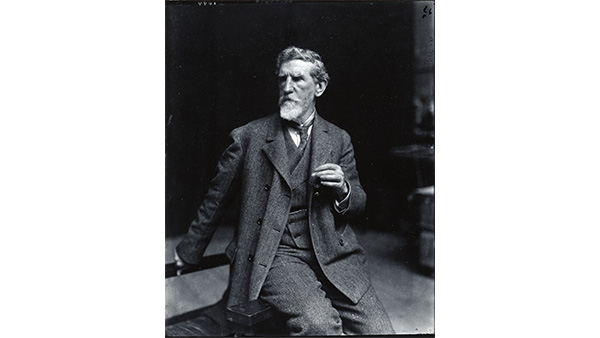
Augustus Saint-Gaudens was a renowned sculptor who significantly contributed to the development of Indian Head gold coins in the early 20th century. Born in 1848 in Dublin, Ireland, Saint-Gaudens immigrated to the United States with his family at the age of six. He quickly gained recognition for his artistic talent and went on to become one of the most influential sculptors of his time.
Saint-Gaudens' artistic achievements were diverse and extensive. His sculptures exhibited remarkable attention to detail and a mastery of form, earning him accolades and commissions from prominent figures like President Theodore Roosevelt. Saint-Gaudens' work was known for its meticulousness and high relief effect, which added depth and dimension to his designs.
His collaboration with President Roosevelt on the Saint-Gaudens double eagle eventually led to the creation of the Indian Head gold coins. Roosevelt, a strong advocate for beautifying American coinage, enlisted Saint-Gaudens to redesign the nation's coins. Saint-Gaudens' artistic vision and meticulous attention to detail played a pivotal role in transforming the design elements of United States coins.
The Indian Head gold coins, featuring a striking portrayal of Liberty wearing an intricately feathered headdress, were a radical departure from earlier coins. The obverse design was a tribute to the native people of America, symbolizing their strength and resilience. The stunning new coins also featured a powerful eagle image on the reverse, grasping arrows and an olive branch in its talons.
Augustus Saint-Gaudens' collaboration with Theodore Roosevelt revolutionized American coinage. His artistic achievements and dedication to his craft left an indelible mark on the history of numismatics, immortalizing him as one of the most accomplished sculptors of all time.
Theodore Roosevelt's Involvement In The Coinage Project
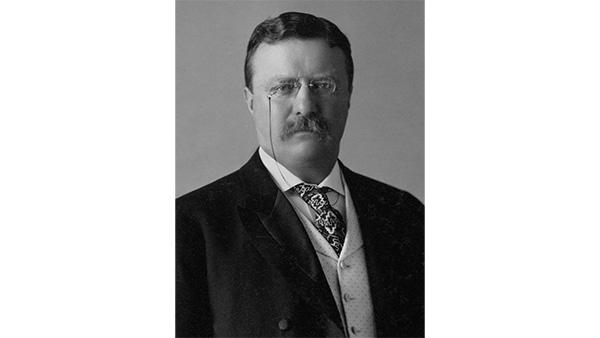
Theodore Roosevelt played a significant role in the development and success of the Indian Head Gold Coins. In 1907, Roosevelt commissioned renowned sculptor Augustus Saint-Gaudens to redesign the nation's double eagle and eagle coins. Impressed by Saint-Gaudens' artistic achievements, Roosevelt believed that American coinage should reflect ancient Greek coins' beauty and artistic quality.
With Roosevelt's personal blessing, Saint-Gaudens set out to create a design that would revolutionize American coinage. The result was a stunning depiction of Liberty wearing an intricately feathered headdress on the obverse of the coins. This design was a tribute to the native people of America, symbolizing their strength and resilience.
Roosevelt's involvement was not limited to the double eagle and eagle coins. The following year, he approved the redesign of the remaining gold coins, including the gold half eagle and quarter eagle. This ensured that the Indian Head Gold Coins became a complete series that represented a new era of American coinage.
Thanks to Roosevelt's vision and Saint-Gaudens' artistic talent, the Indian Head Gold Coins became highly sought after by collectors and investors alike. Today, these coins are not only a piece of history but also a testament to the combined efforts of Roosevelt and Saint-Gaudens to elevate the artistic quality of American coinage.
Bela Lyon Pratt's Contribution To The Design
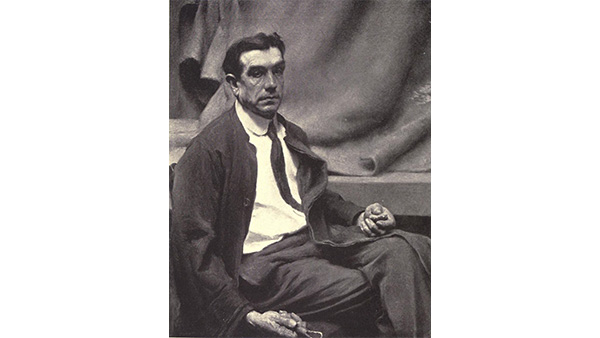
The President’s friend, Dr. William Sturgis Bigelow could be said to be responsible for Pratt’s role in the design of coins.
Having received an early specimen of the double eagle. Bigelow wrote to the President on January 8, 1908, praising coins and stating that he was working with Boston sculptor, Bela Lyon Pratt, on an idea that would allow coins to be struck in high relief.
The President responded to express his interest two days later, and Pratt found himself busy on a model for the president soon after.
Pratt's most notable contribution to the series was seen in his design of the reverse side of the coins. Despite the limited space available, Pratt skillfully incorporated four different inscriptions - "United States of America," "E Pluribus Unum," the denomination, and the mint mark - without causing them to appear unbalanced or cluttered. This was achieved through his innovative use of lettering style, alignment, and size. The inscriptions were arranged in a way that complemented and enhanced the overall aesthetic of the coin.
On the reverse side of the Indian Head quarter eagles and the Indian Head half eagle, Pratt remained true to Saint-Gaudens' original design, keeping the standing eagle perched on arrows and an olive branch. On the obverse, instead of Liberty, Pratt had a Native American man wearing the headdress. Also notable, is Pratt's use of incuse technique in the coin designs. Incuse design allowed the coins produced to be stacked evenly while still conveying a sense of depth.
Bela Lyon Pratt's contribution to the design of the Indian Head Gold Coins cannot be overstated. His ability to incorporate multiple inscriptions without sacrificing the aesthetic quality and balance of the coins made him an invaluable collaborator in this groundbreaking design.
Features Of Indian Head Gold Coins
Indian Head Gold Coins are beloved by collectors and investors alike for their unique and striking features. Designed by renowned sculptor Augustus Saint-Gaudens and further enhanced by Bela Lyon Pratt, these coins are a true testament to the artistry of American coinage. The obverse side of the coin showcases the beautiful depiction of a Native American man donning an intricately feathered headdress, symbolizing the resilience and strength of the Native American people.
Saint-Gaudens' high-relief effects add a touch of artistic quality to the design of the ten dollar coin, making these coins visually captivating. On the reverse side, Pratt ingeniously incorporated multiple inscriptions without compromising the overall aesthetics. The Indian Head Gold Coins are not only pieces of history but also testaments to the skill and innovation of these iconic artists.
Obverse Design: Feathered Headdress And Portrait Of A Native American man
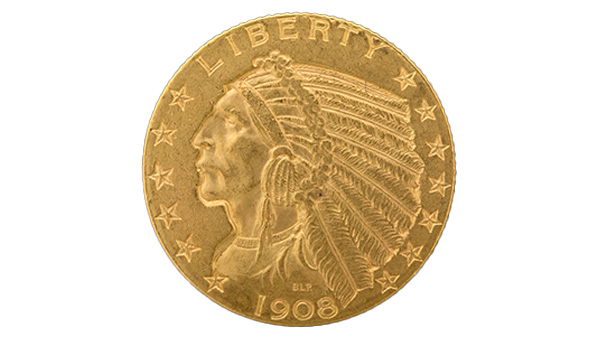
The obverse design of Indian Head Gold Coins features a striking portrayal of a Native American man wearing a detailed and intricate feathered headdress. This iconic image showcases the rich cultural heritage and history of Native Americans in the United States.
The feathered headdress holds great significance in Native American culture, representing honor, valor, and leadership within tribes. It is a symbol of respect and authority, often worn by tribal chiefs and warriors during ceremonial events and important gatherings. By including this headdress in the design of the Indian Head Gold Coins, the U.S. Mint sought to pay homage to the Native American people and their contributions to the nation.
The portrait is skillfully executed, with attention to detail and artistic quality. The man is depicted with a stern expression, reflecting strong leadership and wisdom. The headdress itself is intricately designed, with feathers arranged naturally and authentically, showcasing the craftsmanship and cultural significance behind such headwear.
However, it is worth mentioning that the depiction of a Caucasian female wearing a Native American headdress in the earlier versions of the Indian Head Gold Coins has sparked controversy and criticism. Critics argue that it perpetuates stereotypes and appropriates Native American culture. Acknowledging this controversy and engaging in discussions surrounding the representation of diverse cultures in art is important.
In summary, the obverse design of Indian Head Gold Coins showcases a portrait of a Native American man wearing a feathered headdress, symbolizing respect and admiration for Native American culture and heritage. While the inclusion of a Caucasian female wearing a Native American headdress in earlier versions has raised concerns, the overall design of the coins pays tribute to the Native American community and their contributions to the nation.
Reverse Design: Standing American Eagle
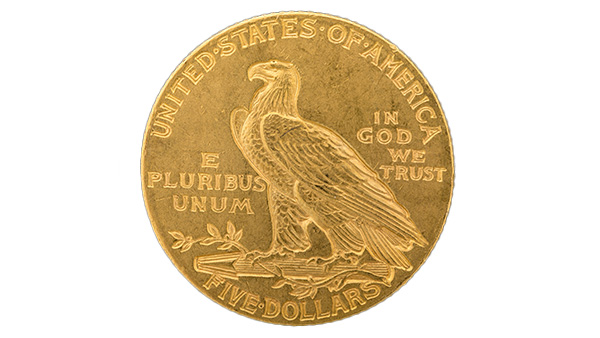
The reverse design of the Indian Head Gold Coins showcases a powerful and iconic symbol: an eagle standing on a sheaf of arrows with an olive branch at its feet. This design is a beautiful representation of peace and harmony, a stark contrast to the aggressive and war-like imagery often seen on earlier American coins.
With its majestic presence and proud stature, the eagle is a renowned symbol of strength and freedom. The inclusion of the olive branch in its left talon adds another layer of symbolism, representing peace and goodwill. This design choice reflects the desire for peaceful relations and diplomacy during a time of economic unrest and global challenges.
By featuring the eagle clutching an olive branch, the Indian Head Gold Coins convey a message of hope and unity. It serves as a reminder of the values and principles that the United States stands for, even in the face of adversity. This design is visually striking and holds deep meaning, making it a notable piece of American coinage history.
Artistic Quality Of The Coins
Indian Head Gold Coins are significant as legal tender and stand out for their exceptional artistic quality. The coins boast unique artwork that showcases the rich heritage and culture of the United States.
One of the standout features of these coins is the intricate and detailed design of the Indian head, which gives the coins their name. The Indian headdress on the obverse side of the coin features a feathered headdress and a striking profile of a Native American chief. This design element was created by famed sculptor Augustus Saint-Gaudens, adding a touch of artistry that sets these coins apart from others.
Additionally, the coins feature Latin and English inscriptions that add to their appeal. The Latin motto "E Pluribus Unum," meaning "Out of many, one" perfectly captures the spirit of unity in America. The English inscription of "Liberty" reminds us of the freedom that the country stands for.
The coins also have special engravings that further enhance their artistic value. The reverse design showcases a majestic eagle, created by Bela Lyon Pratt. The detailing and craftsmanship in the eagle image are truly remarkable, making it a real gem in American coinage.
The advanced technological features of Indian Head Gold Coins add to their allure. High-quality minting techniques of the era, such as the use of incuse (sunken) relief, impart a unique three-dimensional effect to the design, further showcasing the artistic prowess of the creators.
Indian Head Gold Coins are a valuable piece of history and an embodiment of artistic excellence. With their unique artwork, Latin and English inscriptions, special engravings, and advanced technological features, these coins are truly a masterpiece in the world of numismatics.
Pre-1933 Indian Head Gold Pieces And Double Eagles
Pre-1933 Indian Head Gold Pieces and Double Eagles are two iconic gold coin series that hold a special place in American numismatic history. The coins exude a captivating blend of artistic beauty and historical significance. With their intricate details, high-relief effects, and unique minting techniques, these coins offer a piece of history that continues to fascinate collectors and investors alike.
During the First World War, gold coins commanded a premium over their face value, and many gold pieces returned from Europe to pay for war materials. This lowered demand for new pieces, and the United States Mint soon ceased production of gold coins following orders from President Franklin Roosevelt.
The melting of millions of coins followed over the years, including the ones in these two series. Thus, such coins are highly sought after in the world of numismatics for their artistic value and historical significance, making them true pieces of history.
Let us delve into the enchanting world of Pre-1933 Indian Head Gold Pieces and Double Eagles, exploring their rich design elements, historical context, and enduring value in the world of American coinage.
Overview Of Pre-1933 American Coins
Pre-1933 American Coins hold immense historical and monetary value, making them highly sought after by collectors and investors alike. Indian Head Gold Coins, a popular series in this collection, showcase intricate designs and rich symbolism, making them particularly attractive to numismatists.
When evaluating the value of Indian Head Gold Coins or any Pre-1933 American Coins, several factors come into play. First and foremost, the condition of the coin is crucial. Well-preserved and uncirculated coins tend to have a higher value compared to those that have been heavily circulated or damaged. Authenticity is also paramount, as counterfeit coins do exist in the market.
To ensure a reliable assessment, it is recommended to consult with a knowledgeable coin dealer. These professionals possess the expertise to determine the condition and authenticity of the coins, giving you confidence in your investment.
Among the various types and grades of Pre-1933 American Coins, the $10 Indian Gold Eagle stands out. Designed by famed sculptor Augustus Saint-Gaudens, it features a striking portrayal of Lady Liberty wearing a feathered headdress, a radical departure from earlier coins. The high-relief effects and artistic quality of this coin have made it a treasured piece of history.
The allure of Pre-1933 American Coins, such as Indian Head Gold Coins, lies in their gold content, historical significance, and beautiful design elements. For collectors and investors, assessing the condition and authenticity of these coins through the guidance of a reputable coin dealer is crucial for making informed decisions.
San Francisco Minted Gold Pieces From 1908 To 1929
San Francisco Minted Gold Pieces from 1908 to 1929 hold a significant place in the Indian Head Gold Coin Collection. These coins, struck at the San Francisco Mint, showcase unique design elements that make them highly sought after by collectors and investors.
During these minting years, the San Francisco Mint produced a variety of gold coins as part of the Indian Head Gold Coin Collection. These coins featured the iconic Indian Head design by sculptor Bela Lyon Pratt on the obverse side. This design, with a Native American wearing a feathered headdress, was a departure from earlier coins and added an artistic flair to the series.
San Francisco Minted Gold Pieces from 1908 to 1929 were made with a gold content of 90%, meaning they contain 90% pure gold. These coins were struck in different denominations, including the $2.50 Quarter Eagle, $5 Indian Gold Half Eagle, and the $10 Indian Gold Eagle.
These gold coins from the San Francisco Mint are not only pieces of American coinage history but also hold a significant amount of gold content, making them valuable to both numismatic collectors and gold investors. With their unique design elements and connection to the Indian Head Gold Coin Collection, these San Francisco Minted Gold Pieces are treasures that capture the rich history of American gold coinage.
Grading Services For Indian Head Gold Coins
When it comes to collecting Indian Head Gold Coins, one important aspect to consider is the grading of these precious pieces. Grading services play a vital role in determining the condition and value of these coins, providing collectors with a reliable and unbiased assessment. There are reputable grading services available, such as the Professional Coin Grading Service (PCGS) and the Numismatic Guaranty Corporation (NGC), which specialize in evaluating and assigning a grade to Indian Head Gold Coins based on their condition, rarity, and overall quality. These services employ experts who carefully examine each coin, taking into account factors like wear, luster, and any potential damage or flaws. By utilizing these grading services, collectors can confidently add graded Indian Head Gold Coins to their collection, ensuring their valuable investment is truly a piece of history.
Professional Coin Grading Service (PCGS)
The Professional Coin Grading Service (PCGS) plays a crucial role in the grading and certification of Indian Head Gold Coins. As one of the top two grading services in the business, PCGS ensures the authenticity and quality of these iconic coins.
PCGS employs a team of expert numismatists who carefully examine, evaluate, and grade Indian Head Gold Coins based on their condition, rarity, and overall appeal. By receiving a PCGS certification, collectors and investors can have confidence in the authenticity and value of their coins.
With its renowned reputation and stringent grading standards, PCGS has become a trusted authority in the numismatic world. The PCGS certification provides a clear and universally recognized assessment of the coin's quality, allowing collectors to make informed decisions about buying and selling Indian Head Gold Coins.
By utilizing the services of PCGS, collectors can navigate the complex world of Indian Head Gold Coins with confidence, knowing that each coin has undergone a thorough and impartial evaluation. Whether it's a rare Double Eagle or a smaller denomination gold coin, PCGS ensures that the Indian Head Gold Coins are accurately and professionally graded, providing peace of mind to collectors and investors alike.